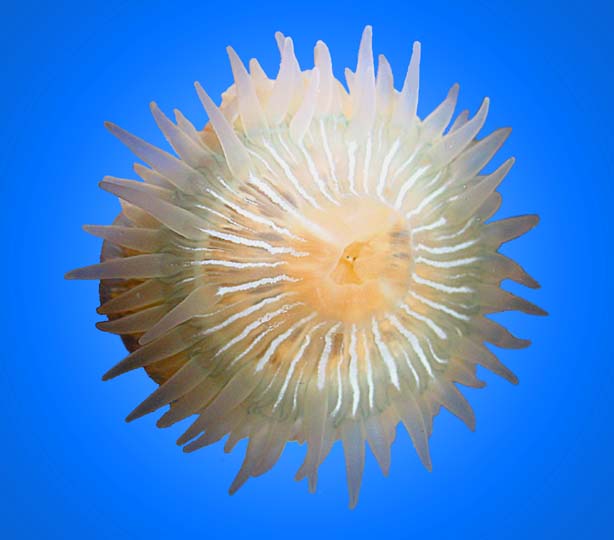Anemone
This striped anemone is a relatively large species among the examples known from the Bay. Taxonomists rely in part on the structure and number of tiny stinging organelles, called nematocysts, distributed throughout the body wall of anemones. Although they resemble the blossoms of flowers, anemones are not plants but are predatory animals. Nematocysts (stinging organelles produced by special cells called cnidoblasts) found in their tentacles and other parts of their bodies each contain a coiled hollow thread which is usually barbed and contains a venom. They are used by the anemone to prey on smaller organisms, for defense, and for fighting territorial battles with other anemones. These tiny organelles fire so rapidly that their movement is thought to be the fastest action in the entire animal kingdom. Nematocysts are triggered by touch, which causes the organelle to turn inside out and drives the venomous thread into its prey, to discharge the venom. Viewing and measuring these nematocysts under a microscope is often crucial to the proper identification of a particular anemone.

